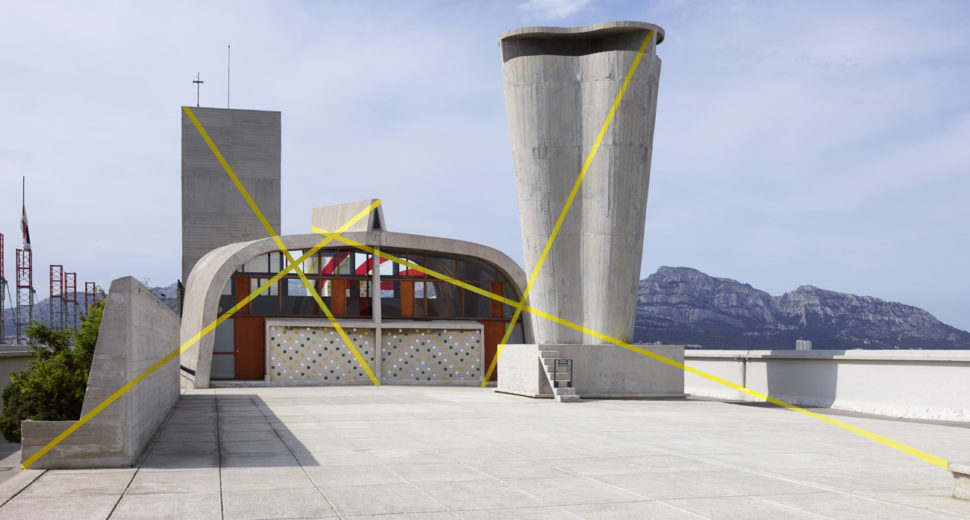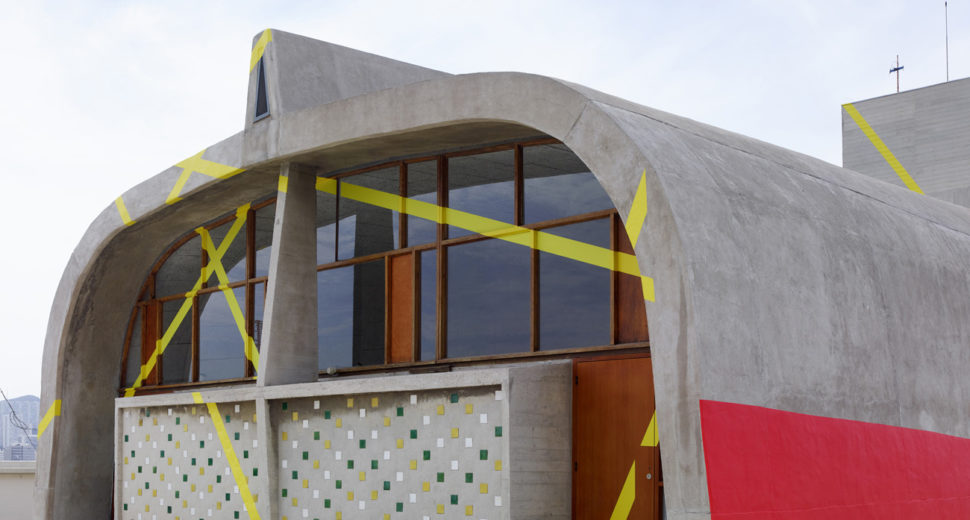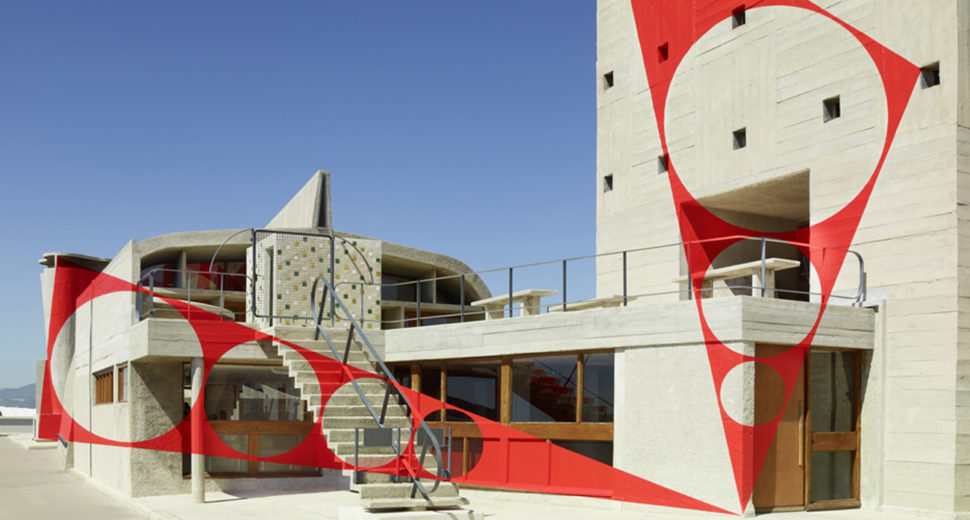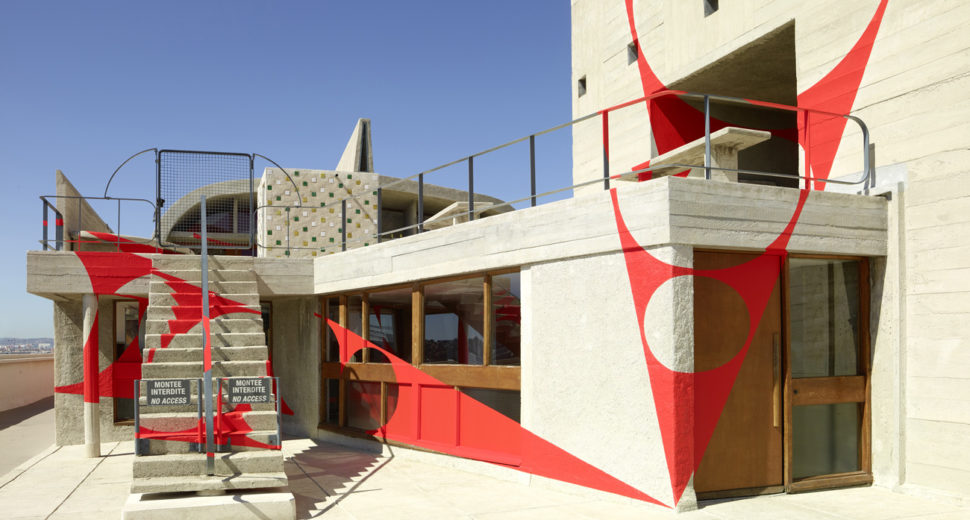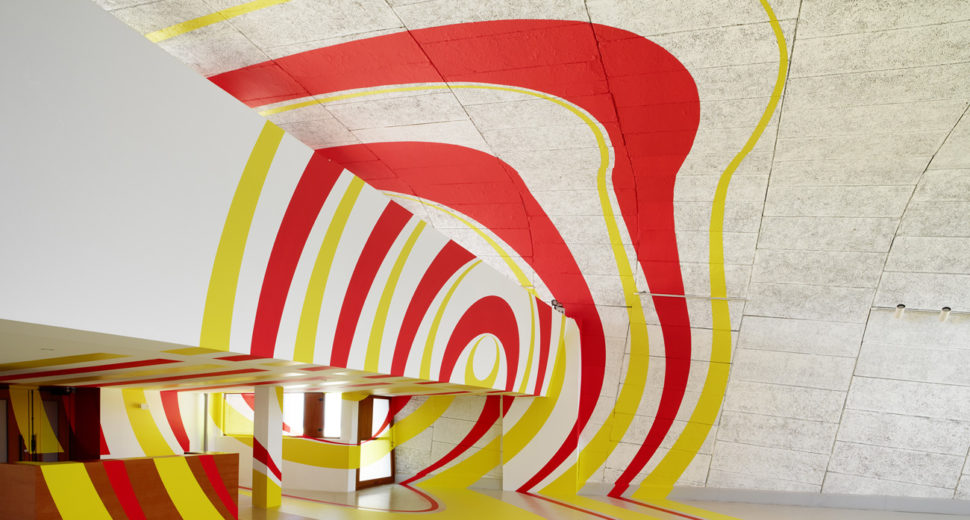Presse, Juillet 2016
Photos © André Morin
Felice Varini opens 'À Ciel Ouvert' on the cultural destination of the Marseille Modulor (MaMo), the rooftop of Le Corbusier's Cité Radieuse.
Felice Varini has applied his optical illusion art on such a wide range of international buildings and spaces over the last three decades — from gothic churches to commercial plazas — so the opportunity to confront the work of Le Corbusier might be considered long overdue. That’s now changed thanks to Ora Ito, the designer whose projects include Marseille Modulor (MaMo), a cultural destination occupying the rooftop of the architect’s Cité Radieuse apartment complex in Marseille. For the fourth annual edition of his artist intervention series, Ito (whose full name is Ito Morabito) invited Varini to interact with the exterior concrete surfaces and interior former gymnasium according to his meticulously linear whimsies. The result: a dimensional dance of colour and form.
With two works outside and a third within, À Ciel Ouvert skims, dives, criss-crosses and swirls over various regions of the rooftop so that depending where a visitor stands, elements of each can be viewed simultaneously. Of course, observing the Varini vernacular is also an exercise in finding the anamorphose, or perspective, from which all the lines unite seamlessly. But here, perhaps more than his other projects, this is certainly not the end goal. ‘The point of view is the point of departure,’ he tells Wallpaper* from one of the few shaded perches on the sun-drenched rooftop.
Varini, who was born in Locarno but lives in Paris, was 12 or 13 years old when Le Corbusier died in 1965. He mentioned reading publications and visiting several other sites but never this one until receiving a call from Ito. Ito, meanwhile, recalls first seeing Varini’s work at the Quai d’Austerlitz in 1985, when he was no more than eight years old. ‘It’s funny because it has followed me all my life; it’s amazing to have been touched by an artist at such a young age,’ he says, adding all four installations—the previous featuring Xavier Veilhan, Daniel Buren and Dan Graham—have allowed him an opportunity to work with his ‘heroes.’
‘For me it’s a perfect exchange and to see how they think. They also inspire me in my own work,’ says Ito, who secured support from Longchamp so that the visit to MaMo is free for the first time (a limited edition tote boasting one of the works against a white backdrop makes for an extra special souvenir).
Ito confessed that Varini is one of the few artists whose work he could project onto such an unconventional combination of vertical and horizontal structures—most notably, the boat-inspired funnel chimney. Choosing his collaborators, he explained, comes down to projecting what he thinks they will do. ‘How can you take power within Le Corbusier if you’re not a master; but I knew [Felice] would be strong enough to take power of the space.’
Go figure, Varini shrugged off the high expectations, noting that he didn’t feel compelled to adhere to Le Corbusier’s lasting notion of Modulor scale, despite the potential. ‘The reality given is the reality,’ he maintains. ‘I wasn’t trying to remake his life. When I arrived, I felt freedom like anyone else.”
The overlap between Varini’s yellow and red echo the hues that punctuate the Cité Radieuse, which was considered a radical ‘vertical village’ upon its completion in 1952, is sheer coincidence. But within the former gymnasium, where Varini has spiraled the two colors spiral together against the whitewashed concrete, art and architecture seem in vibrant, perpetual balance, regardless of where the visitor is standing. Here, the effect is especially meditative—more so considering that the adhesive paint will be removed without leaving a trace behind. ‘It’s like the monks who do mandalas,’ Ito mused, referring to the ephemeral colored chalk creations. ‘Actually I should call this space MaMo Mandala.’ When asked the obvious hypothetical of whether Le Corbusier would have approved of the project, Ito offered without a pause, ‘I think he would love every show that has been here. Everything is of one piece in the end.’
